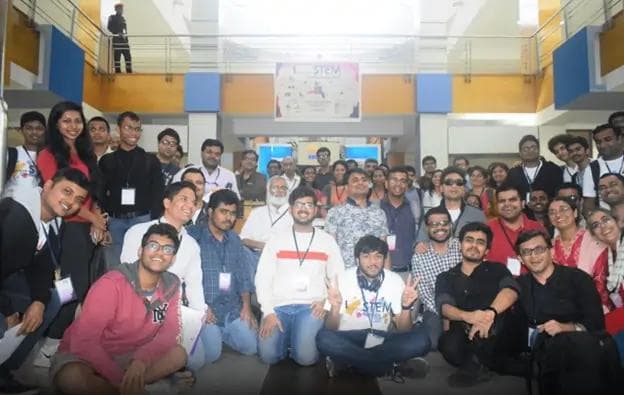GLOBAL INVESTMENT MANAGERS INCREASINGLY MIGRATING TO ENTERPRISE LINUX
GLOBAL INVESTMENT MANAGERS INCREASINGLY MIGRATING TO ENTERPRISE LINUX
Published by Gbaf News
Posted on February 11, 2014

Published by Gbaf News
Posted on February 11, 2014

Simon Garwood, Product Manager, Investment Services, Fiserv
As enterprise operating systems continue to evolve, investment managers are increasingly exploring how to improve the efficiency of their enterprise IT infrastructure. At the same time, these firms are focused on reducing overhead costs, while maximising the value of remaining expenditures. This means that investment managers are thoroughly examining their IT budgets, which are often driven by expenses related to licensing, hardware, maintenance and support.

Simon Garwood
Evolving technology
Whilst the financial services industry has for many years relied on a limited number of enterprise operating systems such as Unix® and Windows®, the last decade has seen Enterprise Linux gain considerable global traction with investment managers of all sizes. The origins of Linux and Red Hat Enterprise Linux, both open source solutions, are particularly interesting. Linux was created in 1991 by University of Helsinki student Linus Torvalds, who introduced the free operating system on an Internet newsgroup.
Throughout the 1990s, Linux attracted a passionate, collaborative community of IT aficionados that helped the new system evolve from its foundation as a non-commercial project into a robust enterprise operating system that major firms can leverage for mission-critical, day-to-day initiatives. As a result, Enterprise Linux formally debuted in 2002 as a commercialised-version of Linux, and has since become the global leader in open source enterprise technology.
In 2014, Enterprise Linux is established with a strong, global history in functioning as a highly secure, scalable and performance-driven infrastructure for investment managers – and the entire global financial services industry. This has generated a wider adoption of Enterprise Linux by IT leaders at financial services organizations worldwide.
Proven track-record
Financial powerhouses now leverage Enterprise Linux because it enables them to increase security, save time, and process mission-critical information far more efficiently. Furthermore, enterprise-level open source technology allows for the precise customisation that is expressly prohibited by “closed source” competitors.
According to the 2013 Enterprise End User Report, published by The Linux Foundation and Yeoman Technology Group, the past few years has seen increasing adoption of Enterprise Linux. The third-annual report is based on a survey of more than 350 IT professionals from major global investment and wealth managers such as Deutsche Bank, Bank of New York, Morgan Stanley, Goldman Sachs, Bank of America, and MetLife.
The report also shows that more than 80 per cent of respondents plan to increase their use of Linux servers over the next five years, with more than 70 per cent planning to deploy Enterprise Linux for new services and applications. In addition, 73 per cent of survey respondents also stating that they intend to increase Linux use for mission-critical workloads.
Functionality and flexibility
Remaining on the leading-edge of technology is a key priority for any financial institution, and as these results show, Enterprise Linux is developing a growing influence within the financial services industry as organisations seek to secure the most up-to-date functionality with advanced flexibility.
In the looming aftermath of what has been called the greatest global economic downturn in recent history, the financial services industry remains committed to reducing top-line expenses. Therefore, cost is regularly cited as a key motivating factor by firms who have or are considering Enterprise Linux adoption.
Estimated cost savings of up to 35%
Moving to Linux can help financial organisations reduce the total cost of ownership (TCO) for front, middle and back-office technology. For example, Arkelis, which is owned by SWIFT, recently published a case study that confirmed its Enterprise Linux deployment contributed to an approximate 35% savings for hardware purchase costs, annual maintenance, operating systems licensing and interface annual fees. In addition, both Hewlett Packard and the Dubai International Finance Centre have published separate case studies demonstrating very similar levels of cost savings and improvements in TCO as a result of Enterprise Linux.
These cost savings can prove particularly valuable for smaller-tier investment management firms who may require the same technology muscle of larger industry counterparts, but do not have the IT budget and resources to deploy it. Enterprise Linux genuinely benefits these smaller organisations because it allows them to manage IT infrastructure in a more efficient manner, while reducing overall costs.
Speed and scalability
Indeed, Enterprise Linux is now a robust platform deployed by many Fortune 500 financial services firms. The platform offers the capability to support thousands of concurrent users with minimal system downtimes, and is distinguished by its operating speed, which is one reason why organisations with Enterprise Linux already in operation plan to dedicate additional resources to its expansion; other firms are even considering a longer-term migration to Enterprise Linux exclusively as part of their strategic objectives.
The true speed of Enterprise Linux is validated by another compelling fact: across the globe, the majority of so-called “supercomputers” run on some variant of Enterprise Linux – including the 10 fastest computers in the world.
Vendors respond to demand for Enterprise Linux
At this time, financial services technology vendors are progressively working to evaluate which applications they need to develop for Enterprise Linux. As the priorities of investment managers and financial institutions continue to evolve over time – and as trust in the open architecture basis of Enterprise Linux grows – financial services technology providers must ensure that their solutions are compatible with Enterprise Linux. They must also remain flexible, and continue to provide exactly what the global financial industry demands from them.
Simon Garwood, Product Manager, Investment Services, Fiserv
As enterprise operating systems continue to evolve, investment managers are increasingly exploring how to improve the efficiency of their enterprise IT infrastructure. At the same time, these firms are focused on reducing overhead costs, while maximising the value of remaining expenditures. This means that investment managers are thoroughly examining their IT budgets, which are often driven by expenses related to licensing, hardware, maintenance and support.

Simon Garwood
Evolving technology
Whilst the financial services industry has for many years relied on a limited number of enterprise operating systems such as Unix® and Windows®, the last decade has seen Enterprise Linux gain considerable global traction with investment managers of all sizes. The origins of Linux and Red Hat Enterprise Linux, both open source solutions, are particularly interesting. Linux was created in 1991 by University of Helsinki student Linus Torvalds, who introduced the free operating system on an Internet newsgroup.
Throughout the 1990s, Linux attracted a passionate, collaborative community of IT aficionados that helped the new system evolve from its foundation as a non-commercial project into a robust enterprise operating system that major firms can leverage for mission-critical, day-to-day initiatives. As a result, Enterprise Linux formally debuted in 2002 as a commercialised-version of Linux, and has since become the global leader in open source enterprise technology.
In 2014, Enterprise Linux is established with a strong, global history in functioning as a highly secure, scalable and performance-driven infrastructure for investment managers – and the entire global financial services industry. This has generated a wider adoption of Enterprise Linux by IT leaders at financial services organizations worldwide.
Proven track-record
Financial powerhouses now leverage Enterprise Linux because it enables them to increase security, save time, and process mission-critical information far more efficiently. Furthermore, enterprise-level open source technology allows for the precise customisation that is expressly prohibited by “closed source” competitors.
According to the 2013 Enterprise End User Report, published by The Linux Foundation and Yeoman Technology Group, the past few years has seen increasing adoption of Enterprise Linux. The third-annual report is based on a survey of more than 350 IT professionals from major global investment and wealth managers such as Deutsche Bank, Bank of New York, Morgan Stanley, Goldman Sachs, Bank of America, and MetLife.
The report also shows that more than 80 per cent of respondents plan to increase their use of Linux servers over the next five years, with more than 70 per cent planning to deploy Enterprise Linux for new services and applications. In addition, 73 per cent of survey respondents also stating that they intend to increase Linux use for mission-critical workloads.
Functionality and flexibility
Remaining on the leading-edge of technology is a key priority for any financial institution, and as these results show, Enterprise Linux is developing a growing influence within the financial services industry as organisations seek to secure the most up-to-date functionality with advanced flexibility.
In the looming aftermath of what has been called the greatest global economic downturn in recent history, the financial services industry remains committed to reducing top-line expenses. Therefore, cost is regularly cited as a key motivating factor by firms who have or are considering Enterprise Linux adoption.
Estimated cost savings of up to 35%
Moving to Linux can help financial organisations reduce the total cost of ownership (TCO) for front, middle and back-office technology. For example, Arkelis, which is owned by SWIFT, recently published a case study that confirmed its Enterprise Linux deployment contributed to an approximate 35% savings for hardware purchase costs, annual maintenance, operating systems licensing and interface annual fees. In addition, both Hewlett Packard and the Dubai International Finance Centre have published separate case studies demonstrating very similar levels of cost savings and improvements in TCO as a result of Enterprise Linux.
These cost savings can prove particularly valuable for smaller-tier investment management firms who may require the same technology muscle of larger industry counterparts, but do not have the IT budget and resources to deploy it. Enterprise Linux genuinely benefits these smaller organisations because it allows them to manage IT infrastructure in a more efficient manner, while reducing overall costs.
Speed and scalability
Indeed, Enterprise Linux is now a robust platform deployed by many Fortune 500 financial services firms. The platform offers the capability to support thousands of concurrent users with minimal system downtimes, and is distinguished by its operating speed, which is one reason why organisations with Enterprise Linux already in operation plan to dedicate additional resources to its expansion; other firms are even considering a longer-term migration to Enterprise Linux exclusively as part of their strategic objectives.
The true speed of Enterprise Linux is validated by another compelling fact: across the globe, the majority of so-called “supercomputers” run on some variant of Enterprise Linux – including the 10 fastest computers in the world.
Vendors respond to demand for Enterprise Linux
At this time, financial services technology vendors are progressively working to evaluate which applications they need to develop for Enterprise Linux. As the priorities of investment managers and financial institutions continue to evolve over time – and as trust in the open architecture basis of Enterprise Linux grows – financial services technology providers must ensure that their solutions are compatible with Enterprise Linux. They must also remain flexible, and continue to provide exactly what the global financial industry demands from them.
Explore more articles in the Technology category











